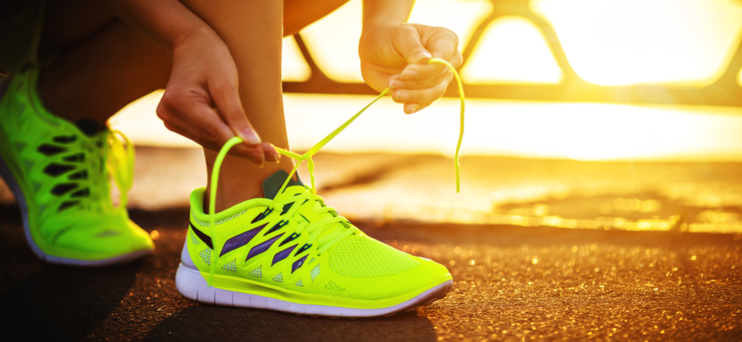
Running shoes vs. training shoes: What’s the difference?
If you have recently been considering purchasing a new pair of athletic shoes, or maybe just have found yourself looking down at your feet in deep thought, then you may be wondering, what is the difference between running shoes and training shoes? The truth is that many of us don’t know the difference between the two, even if we are regulars at the gym or on the running track. If you have found that someone has told you there are reasons you should buy a running shoe for running and a training shoe for training, they may have a good point. Let’s talk about the differences between these two different types of athletic shoes.
The Basic Difference…
With a quick glance, running and training shoes may not seem that different. Maybe you have even carefully compared the two and still can’t pinpoint what it is that makes them different from one another. Let’s take a look at some of the basic differences between the two.
-
Running Shoes
Running shoes are built for movement between the heel to the toe, from toe to heel, or from front to back. These shoes are also a bit tighter around the toes, while holistically, they are more of a flexible shoe. This design is to help keep the shoe snug on your foot, but to not limit the natural movement and flexing of the foot. You’ll also find that running shoes are a bit smaller, or slimmer than training shoes. You also may find that there is more support in different places of a running shoe in order to help support your foot during impact.
-
Training Shoes
While running shoes are built for the front to back movement, training shoes are built for more of a multi-directional movement. This is especially apparent in a focus of the lateral movement, in other words, from side to side. You will also find that training shoes are a bit more firm, as well as a bit larger in size (they are a bulkier shoe). The firmness of the shoe is there for the support that is necessary for multiple directional movement. The bulkier size is due to things such as a wider base in order to insert more support around the shoe in order to give protection from all angles.
Which ones are best for you?
To be quite frank, it really is best to have a pair of both. It truly depends on what you do for your exercise routines. If you are solely a runner, then you will be just fine with running shoes. But, if you also like to work out with weights, engage in strength or agility training, or participate in aerobics classes at your Bedford gym, etc., then you should put on a pair of training shoes. It is fine if you want to go for a short jog or walk in your training shoes of course, it is just suggested that you wear your running shoes if you plan to do more than about 3 miles.
Throw on either your running shoes or training shoes and head over to our fitness center in Arlington and Bedford. Our team of fitness experts would be happy to help you out with any more questions you may have when it comes to exercise. Contact us today, and let’s get started on a journey to healthier and happier you.

